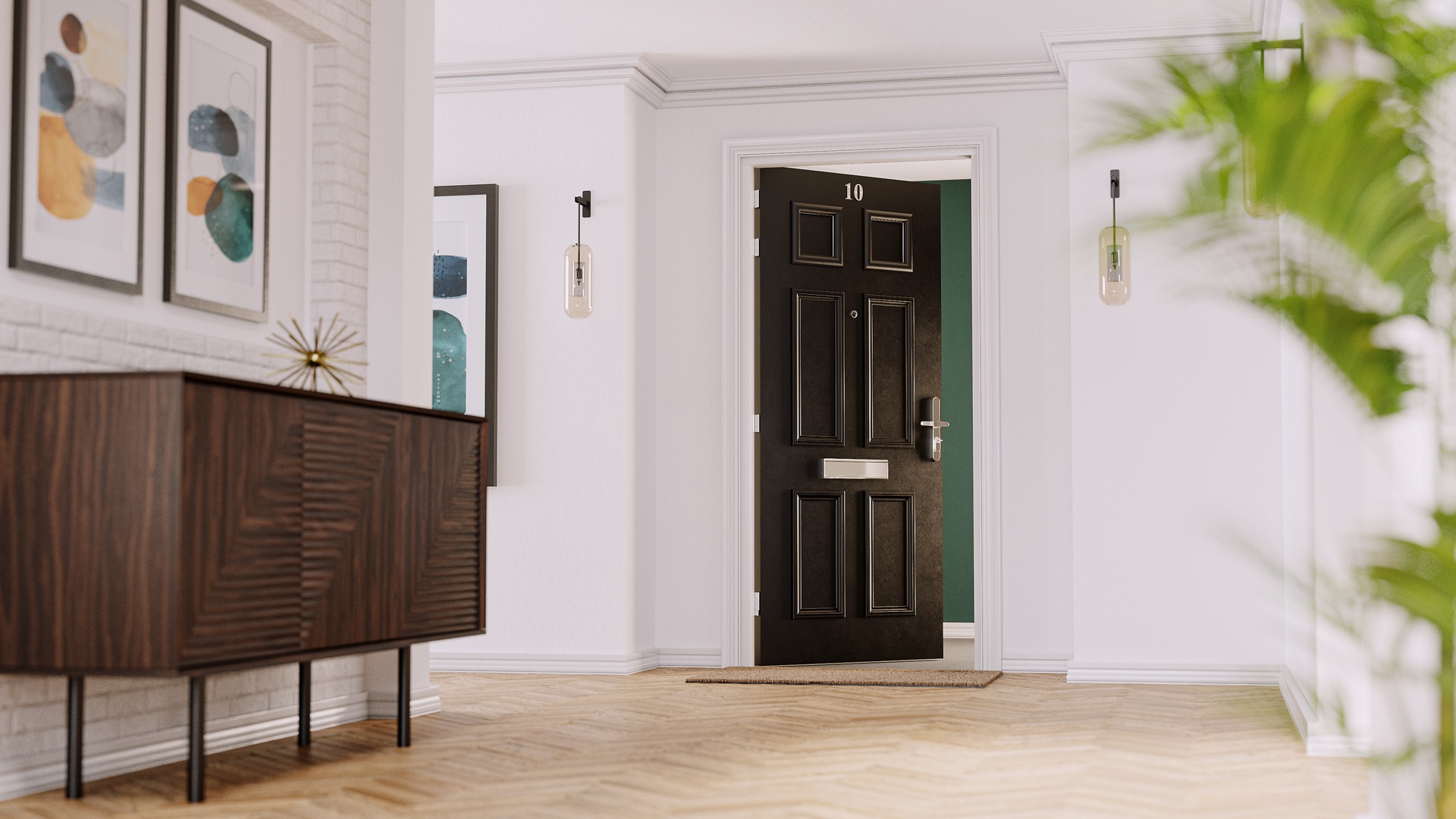When buying fire doors for a shared building, be that a domestic residence or a commercial property, you will typically be choosing between either FD30 or FD60 designs. In this guide from Sentry Doors, a manufacturer of bespoke fire resistant doorsets, we’ll explain the difference between FD30 and FD60 doors, the additional components that will need to be covered by this, and the uses of each within a building project.
The Importance of Fire Doors
Fire doors perform a vital role within all shared buildings, inhibiting the spread of fire and smoke in everything from social housing to office blocks. Limiting the passage of a fire creates a crucial escape window for those within the building, allowing safe evacuation. With the exception of private homes, fire-rated doors are a legal requirement throughout all buildings in the UK, with government regulations on the placement of fire doors in both domestic properties like social housing and in commercial buildings.
The Components of a Fire Door
In order to be considered a fire-rated door, all components of the door must also be fire rated. This means that the frame surrounding it, all hinges, door handles, and signage must all boast fire resistance at the same level of the door itself. It also means that the door must create a tight seal within its frame, using intumescent strips with a cold smoke seal to ensure smoke and flames do not pass around it.
Fire doors will need to automatically close, and can only be kept open with approved retainers, which attach to the door itself and automatically disengage during a fire. Each of these elements is a requirement for fire doors, ensuring that they offer adequate protection for those within the building.
Understanding The Variations Between FD30 and FD60s
When looking for fire doorsets within the UK you will normally be looking at the fire ratings FD30 and FD60. An FD30 fire door will offer 30 minutes of fire protection, while an FD60 will offer a full hour of protection against all types of fire. In order to meet FD60 regulations, all components must also offer 60 minutes of protection, such as the hinges, door frames, and handles. Most FD30 and FD60s will be constructed from wood, with fire-resistant metal hinges and ironmongery. There are stronger options available, usually constructed from steel and certified to FD90, FD120, or even FD240 levels. These are typically used within industrial settings, or to keep an important room within a building safe, such as a server room.
When Are FD30 Fire Doors Needed?
An FD30 will be the legal minimum for fire protection within a building, and will be commonly used within smaller buildings, or those with lower occupancy. When constructing a building, fire safety is a necessary aspect of design in order to ensure that building regulations are met. Within properties like a smaller shared house, a shop with one or two floors, or an office with a small workforce, FD30 doors are likely to meet building regulations, leaving enough time for a full evacuation during a fire.
When Are FD60s Needed?
The specifications laid out within Approved Document B, part of the building regulations covering fire safety precautions within buildings, necessitates that buildings must be designed so that “All people can escape to a place of safety without external assistance”. In larger or busier shared buildings, a 60-minute window of fire resistance may be required to protect people in the event of a fire. A sufficient fire risk assessment is vital in both new and old buildings, which may advise the use of FD60s in locations like high rise tower blocks, or busy communal buildings.
How Are FD30 and FD60 Fire Doors Tested?
Fire doors within the UK must be tested according to BS 476 Part 22, a British Standards publication. Testing will be performed independently on both sides of the door, ensuring it meets the minimum threshold for time against all possible levels of fire. There are also third party certifications available to further underline the performance of a fire door. At Sentry Doors our FD30 and FD60s are certified under the BM Trada Q-Mark and Certifire schemes.
Our Range of Bespoke Fire Doors
Sentry Doors have been producing fully certified fire doors for over 25 years, manufacturing both FD30 and FD60 doorsets at our state-of-the-art Doncaster facility. We have built long-standing relationships with major contractors, housing associations, and local authorities, specialising in the social housing industry.
Our range of both internal flat entrance doors and communal entrance doors are made to measure, built to the exact specifications of our clients in a range of styles and colours. We test our products to the extreme, with our BM Trada Q-Mark and Certifire approval further demonstrating our commitments to safety and reliability. Our streamlined production processes allow us to achieve a consistent 6-8 week lead time on all projects, ensuring a responsive service for clients of all sizes. If you are looking for FD30 or FD60, either to be installed within a new build project, or as part of a refurbishment, speak to a member of our team today.
Contact Sentry Doors to learn more about what we can offer you.

